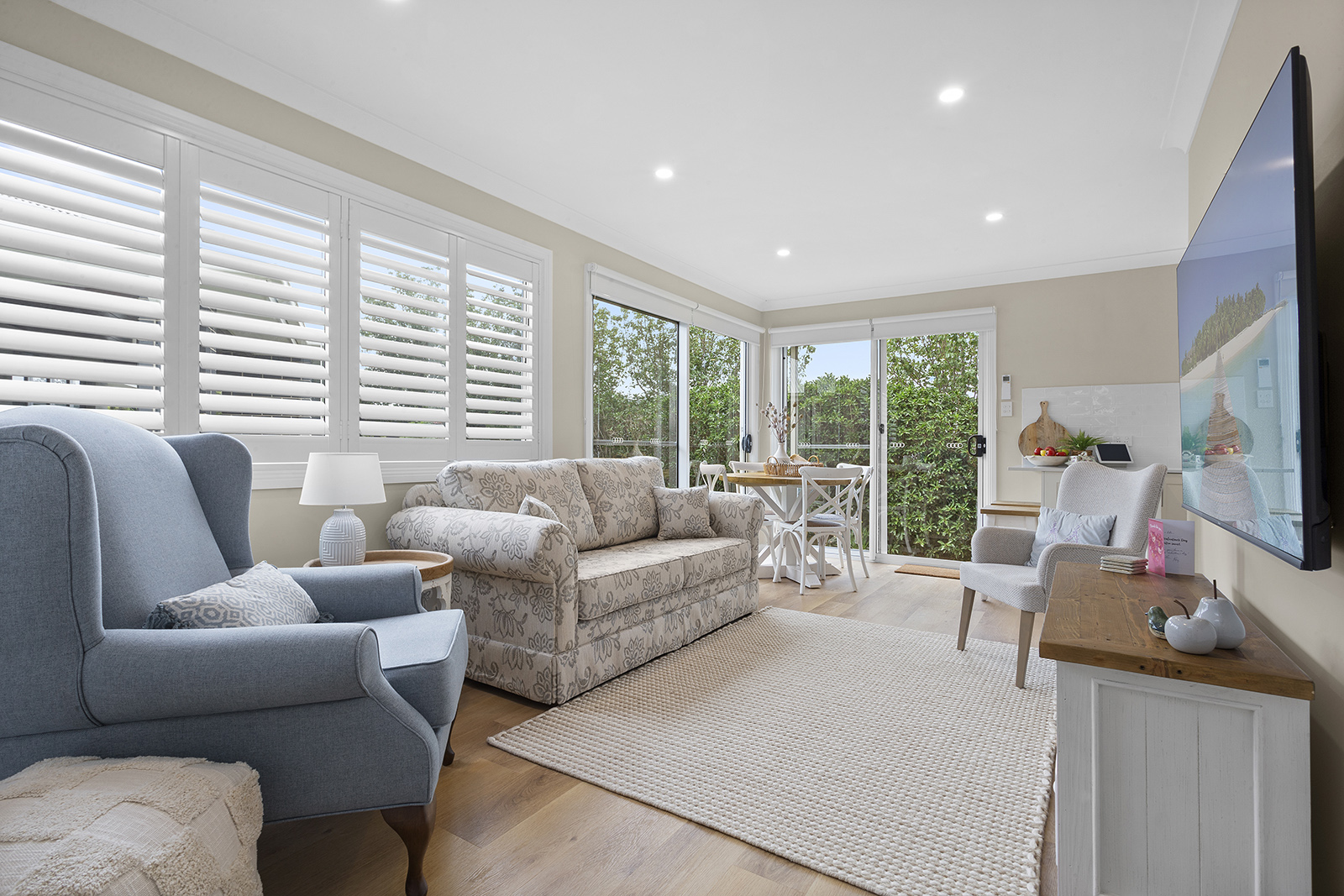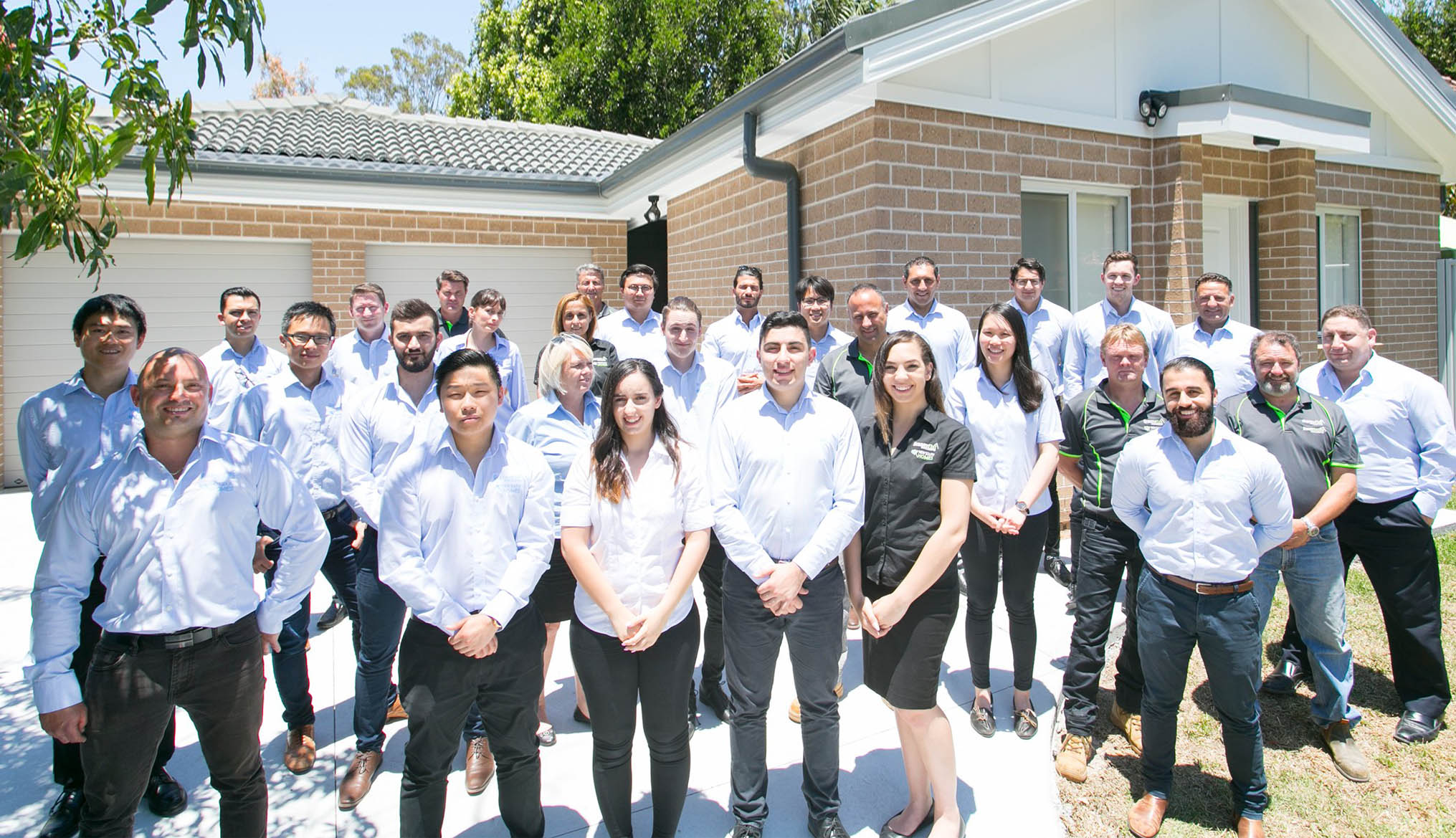



Get in touch
with us today…
Contact us for a private viewing to see a granny flat in your area today!

Employment Opportunities
We are always open to hiring motivated and creative workers who share our same passion to provide high-quality dwellings and attentive customer service.
If you are interested, please submit your details and resume.
Tackling Australia’s Housing Crisis with Granny Flats

It is hardly breaking news that Australia is in the midst of a housing crisis. Rising costs to buy or rent property and a shortage of affordable living spaces have added greater stress to those already suffering from cost-of-living pressures.
For short-term relief (or perhaps even long-term) in the housing and rental market, Granny Flats are an untapped resource.
Mortgage stress and high rental prices result in an inaccessible market for a wide percentage of the population. The flexibility of Granny Flats, particularly in our major cities — Sydney, Melbourne and Brisbane — provide an approach to maintaining financial security for both renters and homeowners.
Gone are the days when Granny Flats were reserved for housing elderly family members. Now they are considered secondary dwelling units — self-contained one-to-two bedroom / one bathroom dwellings of at least 60 square metres internally, fit for anyone looking for their own space.
Australia’s Housing Crisis
In Sydney, the housing supply shortage is expected to worsen over the next five years. This persistent undersupply of homes will cause additional pressure on housing costs and further reduce the rental market.
Easing the Australian housing crisis would require state governments to address the lack of properties to rent or buy. So far, proposed solutions are restricted by time, regulations, and industry shortages, thereby not providing a tangible, immediate solution that recognises the market’s current lack of affordability as rent costs rise faster than household incomes.
So, how did Australia get here? Years of legislative and financial policies have disinvested social housing. The promotion of housing as investment properties, population growth, and a drive for urbanisation have also complicated the housing market.
Currently, a third of all Australians are renting, and only 33% of all homeowners are mortgage-free. The COVID-19 pandemic saw median rents spike, and they have only increased due to inflation and the return of overseas migration.
The Concept of Affordable Housing
The New South Wales Government defines affordable housing as dwellings that enable very low to moderate households to comfortably meet other basic living costs (food, clothing, transport, energy, medical care, and education). Affordable housing should, by definition, cost approximately 30% less than the household’s gross income. As a result, these homes are usually built through planned incentives with assistance from local, state and/or federal governments.
The Australian Government’s Treasury housing policy outlines various funds, grants, programs, and bonuses available to local, state, and territory governments to accelerate their investment in building refurbished social houses. The Treasury recognises the need for cooperation among all levels of government to tackle this national issue, but current schemes like the Home Guarantee Scheme (HGS) for first-time buyers are only eligible to very few.
Granny Flats as a Solution

This is where Granny Flats come in handy. Cheaper than a knock-down rebuild, Granny Flats play the role of an extra accommodation unit available to rent and are a positive-geared immediate investment for homeowners. Moreover, there has been a surge in popularity for Granny Flats from single-person households and ageing tenants.
Granny Flats as a potential solution to expand housing infrastructure is already well underway in areas with high demand for housing affordability, like Sydney and Newcastle. Granny Flat approvals are booming in Greater Western Sydney as properties in the area are bigger with more land to build on.
Therefore, as governments amend legislation and develop policies for institutional, long-term solutions to the housing crisis, the private sector can lend immediate assistance.
Challenges and Considerations
Zoning laws unique to individual local councils and states complicate the process for Granny Flat development approvals. NSW, for example, requires a Complying Development Certificate (CDC) to be approved before property owners can commence the build, whereas Victoria has removed the need for planning permits to streamline the process.
Moreover, homeowners planning to construct a Granny Flat on their property will be regarded as landlords. Therefore, the relationship between themselves and their tenants will be governed by the Residential Tenancies Act 2010.
Fortunately, Granny Flat Solutions has over 40 years in the industry, and we are well aware of the various requirements to be considered in all stages of the build process. Moreover, while we offer the opportunity to customise your Granny Flat to cater for your specific needs and lifestyle, the design stage can be entirely fast-tracked with our 1, 2, 3 and 4 bedroom Granny Flat range. These include options with a garage, porch, or studio.
Why Wait? See if Your Property Can House a Granny Flat Today!

Keep your finger on the pulse with regular research into housing solutions and Australia’s Granny Flat market. Granny Flat Solutions releases regular articles exploring a wide range of relevant housing topics, from understanding unique renter needs to choosing the right location and design for your Granny Flats. Stay informed and stay ahead.
Want to learn more about your specific suburb or property? Our online site check modelling tool can give you an idea if your property has the room to build a Granny Flat. Simply type your address and see for yourself!
To learn more about how we can help you future-proof your Granny Flat with eco-tech, call Sydney’s only multi-award-winning Granny Flat Builder with 40 years of experience today on 1300 160 320.
Ready to start your building journey? Chat to our team of experts today and get a FREE personalised quote
Find Out More
“Experience the difference for yourself.”
Call 02 9481 7443 or contact us online now to book your free site inspection and quote.







